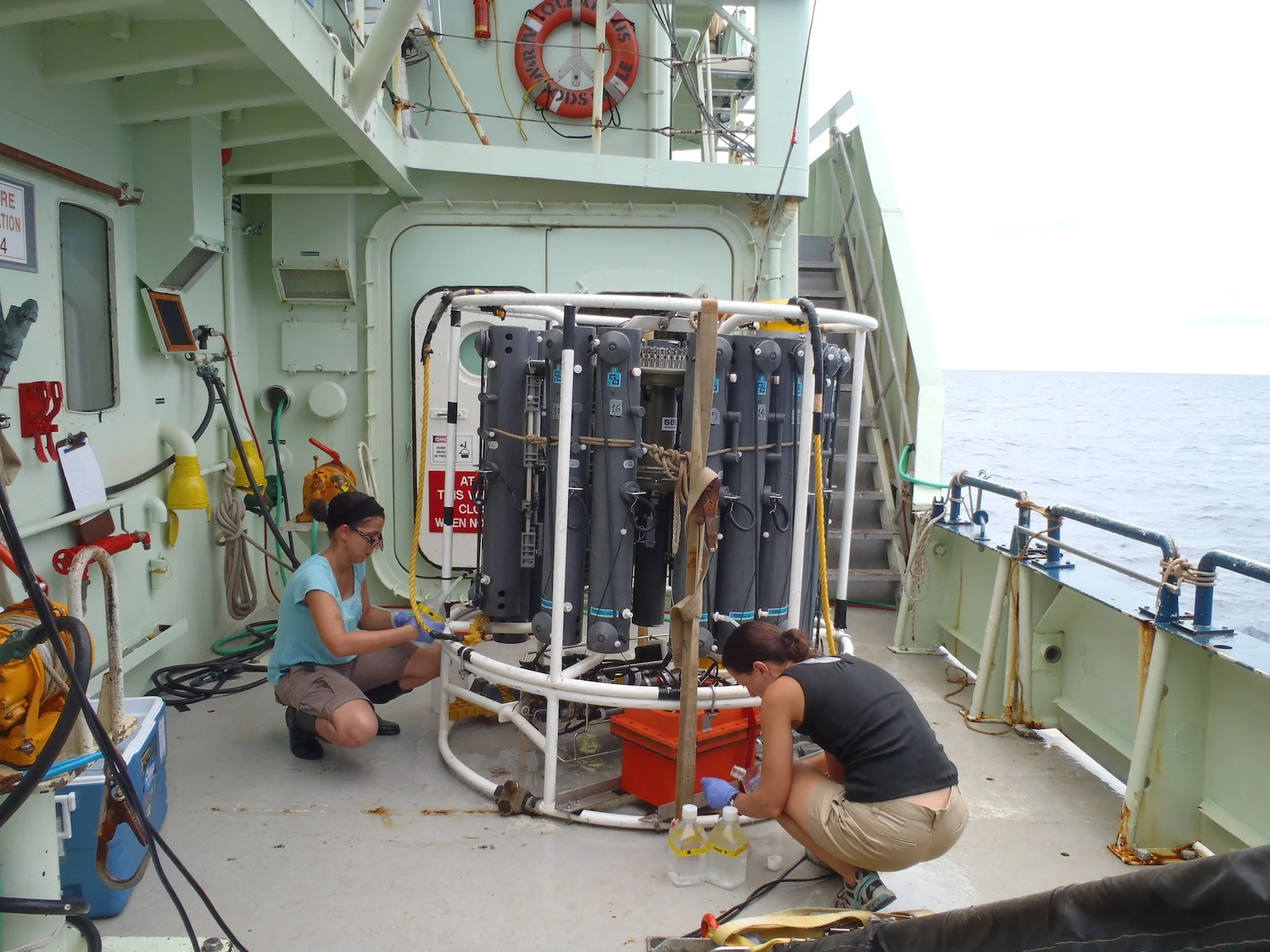As you can probably tell, the Brine Microbial Observatory Project is all about extreme environments and the microorganisms that thrive there. Today, the story is about extreme eruptions. Back in about 2005, we found an interesting site in Garden Banks Lease Block 697 (GB697). We observed massive discharges of fluidized mud and Ian MacDonald, my good colleague from Florida State University, coined the name “The Hot Site”; because, usually these types of eruptive mud discharges are a little hot (~40 ºC). We visited the area with Alvin back in 2010 and discovered that the erupting fluids were in fact cold (about 5 ºC), which was perplexing. Still, the terrain was astonishing and extremely interesting, so to us it’s still a hot site.
Treasured moments
To have a brine-filled basin like Orca, the super-salty fluid has to flow in from somewhere. But where? The published literature on Orca geology suggests that the salt diapirs that donate salt to the deep basin are located on the eastern flank of the central basin. We wanted to find it and better yet, SEE it, and, even better, SAMPLE it!
Magic in slow motion
A few days ago, I posted on hydrate-derived brine and noted a difference between hydrate-derived brine and salt-dissolution derived brine. Currently, we are studying one of the most spectacular salt-dissolution derived brine ecosystems in the Gulf: The Orca Basin. I could spend a year sampling in Orca and find something new every day. We’re here for one more dive and I cannot wait to get back…hopefully in the next year or two.
The weather wars
Each of us has events in our life that shape our future. As a junior at UNC-Chapel Hill, I was a pre-med major and I took an elective oceanography class. After two weeks of lectures, I was hooked, thanks largely to an incredibly smart, engaging and truly amazing Professor, Dr. Conrad Neumann. Thank You Conrad; you changed my life for the better. Conrad’s enthusiasm for ocean science was contagious and I was hooked.
Getting your bearings
People often ask ‘what’s it like to be in the Alvin?’ My answer is always the same: it’s magical; a life changing experience; more incredible than you could ever imagine. It is magical. It is life changing. It is incredible. But sometimes it’s also frustrating: scientific instruments may not perform to specs or may fail all together and every once in a while, finding a target – that proverbial needle in a haystack a mile under water – is tough. Then there are the cases where you want to do one thing, go to one place, grab one more sample, and for whatever reason, it does not happen and you feel like a failure; those things leave me with a feeling of immense frustration.






